While buying growth stocks allows investors to invest in low-priced stocks that are set to increase in value, it is not a strategy that comes without stock market risks. Read on to learn the growth stocks definition, what makes a growth stock rise in value, and how you can begin investing in these companies.
Characteristics of Growth Stocks
Growth investing focuses on companies expected to grow earnings at an above-average rate, whereas value investing targets undervalued companies whose stock prices are believed to be below their intrinsic values.
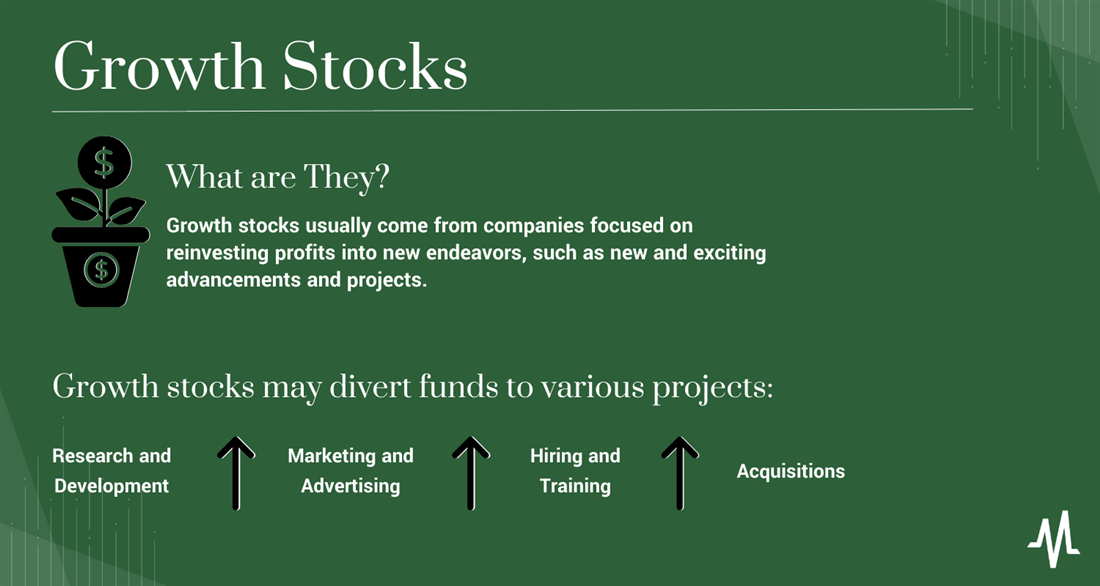
Common growth stock traits include:
- High Earnings Growth: These companies typically have high rates of growth in earnings, revenue, or cash flows, often beating the average in their industry or the broader market.
- Higher Valuations: Compared to the market average, growth stocks usually have higher price-to-earnings (P/E) ratios and price-to-sales (P/S) ratios, which reflect investors' willingness to pay a premium for expected future earnings growth.
- Reinvestment of Profits: Rather than paying out dividends, growth companies often reinvest profits back into the business for research and development, marketing and advertising, hiring and training, acquiring other companies, or other growth initiatives that drive innovation and help them stay competitive and capture additional market share.
- Market Leadership: Many growth stocks are prominent players in emerging sectors or innovative technologies so they are at the forefront of market trends and consumer demands.
- Volatility: Because much of their value is based on future expectations, these stocks can exhibit greater volatility as they react more significantly to market changes and company performance updates.
- Minimal Dividend Payouts: Because they typically reinvest earnings, growth stocks usually offer little or no dividend yield, which can be a trade-off for the potential for substantial capital gains.
Examples of Growth Stocks
Let's take a look at four successful growth stock examples, all of which are prominent players in their sectors.
Amazon.com Inc. NASDAQ: AMZN, a global player in e-commerce, has built a reputation as a growth stock due to its diverse business operations. Amazon offers a vast array of products spanning from everyday items to an extensive digital content library through its comprehensive marketplace.
What sets Amazon apart as a growth stock is its dedication to expansion and innovation. The company has ventured into cloud computing, with Amazon Web Services (AWS) dominating the streaming realm through Amazon Prime Video and introducing cutting-edge smart devices like the Amazon Echo. Amazon's strategic focus on artificial intelligence (AI) and data-driven processes, as well as its attractive valuation and consistent track record, enhances its potential for growth.
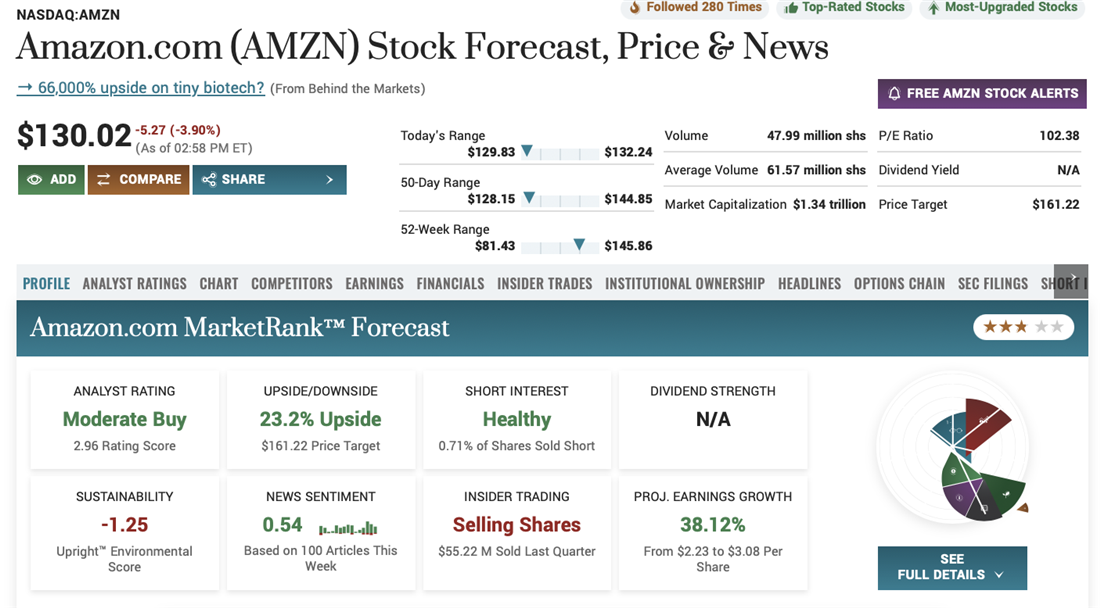
Meta Platforms Inc. NASDAQ: META, formerly known as Facebook, stands as a technology conglomerate with a transformative presence in the social media landscape. Operating an impressive portfolio of platforms, including Facebook, Instagram, Threads and WhatsApp, Meta has carved its niche as a growth stock.
Meta’s focus on integrating emerging technologies, particularly AI, along with its ventures into virtual and augmented reality (VR/AR), demonstrates its commitment to staying at the forefront of the tech industry. The company leverages a data-driven approach in its market strategies and its massive user base to position itself for future revenue growth. With a compelling valuation, Meta attracts investors who are on the lookout for companies with strong growth potential.
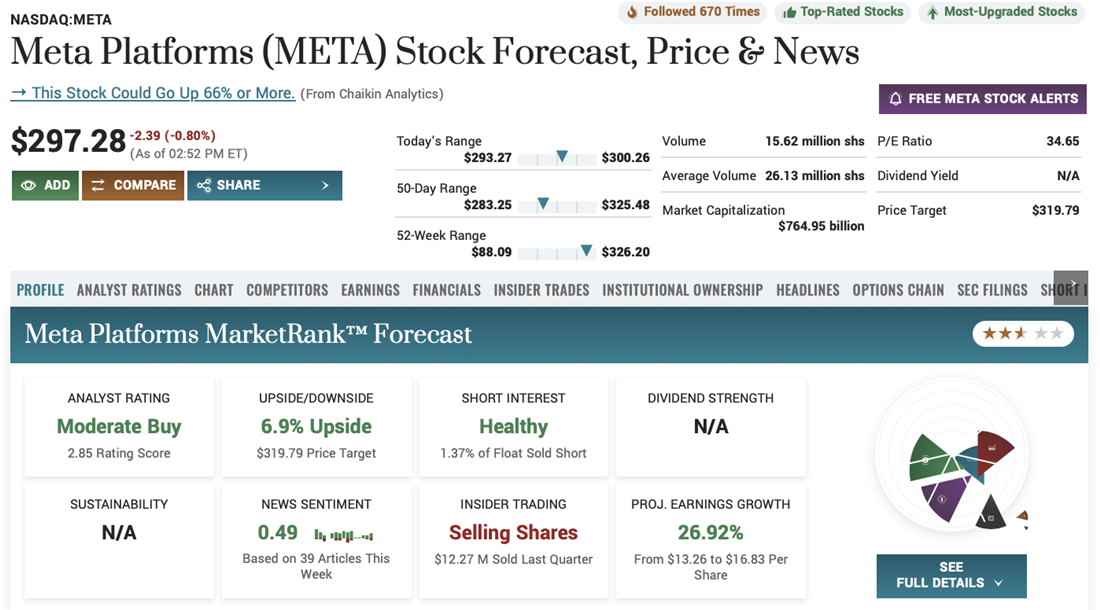
Apple Inc.
Apple Inc. NASDAQ: AAPL is a hallmark of American innovation. Known for its diverse range of popular consumer electronics like iPhones, iPads, MacBooks, and Apple Watches, Apple has always prioritized cutting-edge research and development, and much of its revenue is reinvested back into its relentless pursuit of cutting-edge products and technologies. They are one of the few growth companies that offer dividend distributions, although the payment amounts are typically lower than companies that focus mainly on income.
Apple investors appreciate the company's ability to continually adapt and maintain leadership in the technology sector. This consistent focus on innovation, coupled with a devoted customer base, highlights Apple's potential for continued growth.
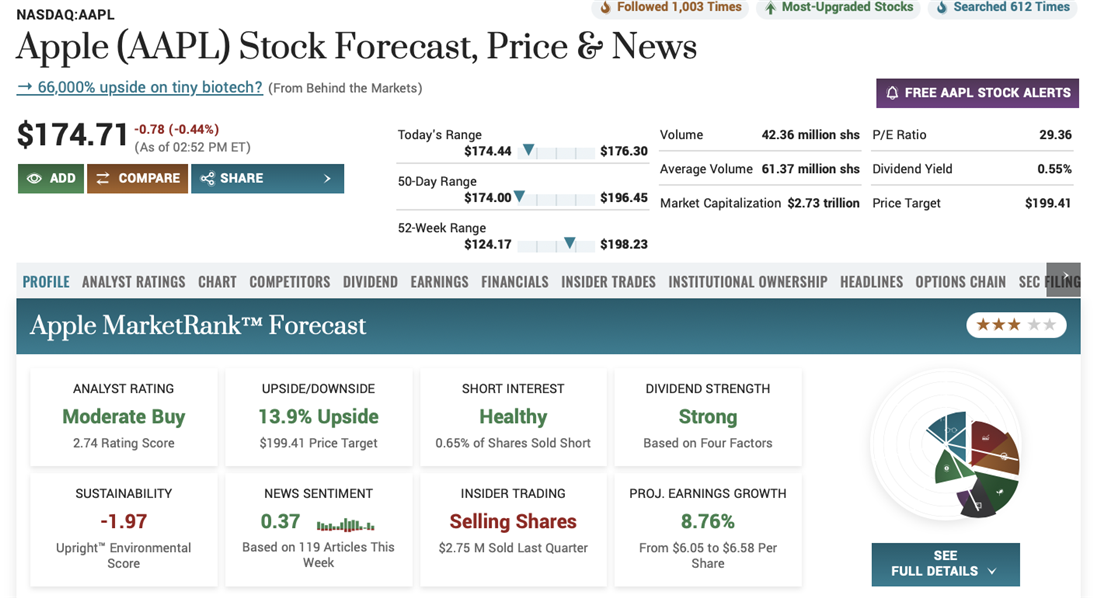
Netflix Inc.
Netflix Inc. NASDAQ: NFLX, a global streaming powerhouse, has earned its status as a growth stock through its impressive subscriber-centric growth strategy. Known for its video-on-demand services, Netflix offers subscribers an extensive library of movies, TV shows and original content in nearly every corner of the globe except China. Its unceasing drive for content innovation makes Netflix a growth stock of note.
The company continuously produces and acquires new TV and film content, fueling its meteoric growth. Netflix's expanding cash flow and profit margins signal the potential for significant earnings growth in the foreseeable future. It provides content through streaming services aligned with evolving media consumption trends, positioning it as a frontrunner in the digital entertainment sector.
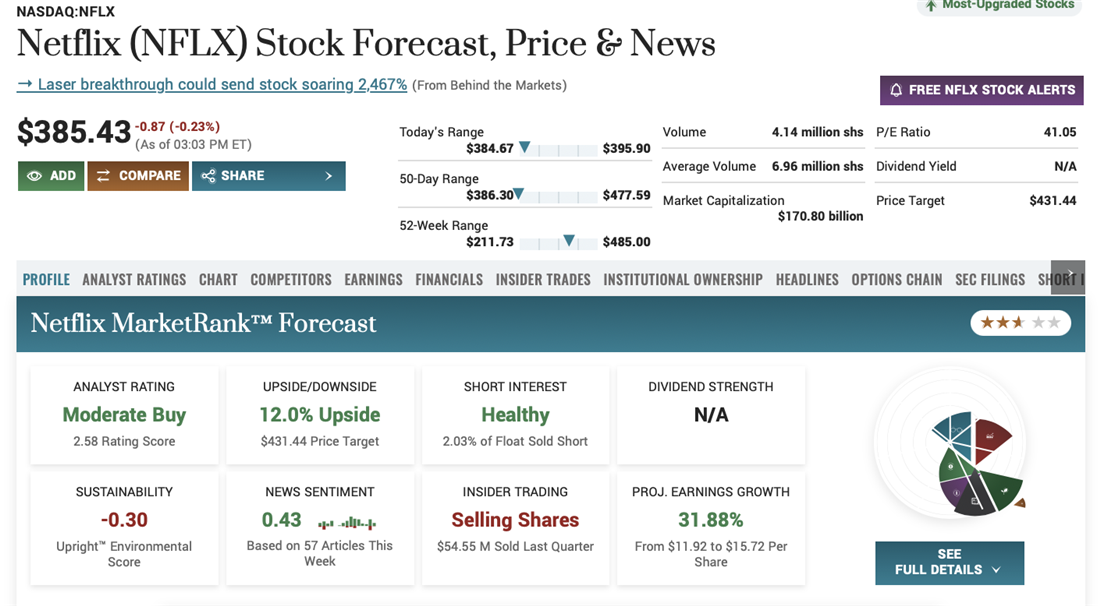
How to Find Growth Stocks
While growth stocks can be found in almost every sector, high-growth industries are well-known for their concentration of growth stocks:
- Technology: These companies often have the potential to grow quickly as they develop and market new products and services.
- Healthcare: Due to factors such as an aging population, increased demand for healthcare services, and advances in medical technology, these companies could see a rapid increase in the coming years.
- E-commerce: With the rise of online shopping and the growth of the digital economy, e-commerce companies should continue multiplying in the future.
- Renewable energy: With growing concerns about climate change and the shift toward cleaner sources of energy, companies that develop and produce renewable energy solutions may have strong growth potential.
How to Assess Growth Stocks
When determining the best growth stocks to add to your portfolio, it's important to do your due diligence. Using research tools from your brokerage firm and information provided by the companies, you'll want to analyze the following key metrics before making an investment.
- Revenue growth: A track record of strong revenue growth indicates that the company has a reliable plan for future profit increases.
- Earnings growth: A history of strong earnings growth or the potential to generate strong earnings growth in the future demonstrates that the company effectively manages costs and generates healthy profits.
- Market opportunity: Companies operating in large, growing markets may have more growth opportunities and attractive investment opportunities.
- Competitive advantage: Look for companies with a unique value proposition that sets them apart like a strong brand, innovative patents or proprietary technology.
- Valuation: Growth stocks are often priced at a premium, so you should find companies that are trading at a reasonable valuation given their growth potential.
Investing in a growth stock ETF like the SPDR Portfolio S&P 500 Growth ETF NYSE: SPYG can be helpful if you're looking for a quick way to add these expansion-oriented stocks to your portfolio while also diversifying across the market.
How to Invest in Growth Stocks
Most growth stocks trade on major markets, including the New York Stock Exchange and the NASDAQ. If you already have a brokerage account, you can use your existing account to research and buy shares of stock using the same method as any other investment. If you don't already have a brokerage account, you'll need to open one.
Step 1: Do Your Research
You can use your broker's stock screening tools to filter for stocks with high growth metrics, including revenue growth, earnings growth and other key performance indicators that may signal strong future growth potential. Consider growth stock mutual funds as well.
Step 2: Place a Buy Order
After identifying which stock or ETF you want to add to your portfolio, place a buy order through your brokerage account. While most brokers offer a wide range of order types, the two most common options are market orders and limit orders.
- Market orders: This allows you to buy at the best available price on the market when you place the order. You should use this type of order when the speed of execution is more important than the price at which the trade goes through and when there is high liquidity in the market.
- Limit orders: This allows you to buy at or below a specified price, helping you avoid paying more than you want. However, there is no guarantee that your brokerage will execute the limit order if the market price does not reach your specified price.
Step 3: Monitor Your Investment
Monitoring your investments and how they change in value is a key component of risk management. Using the financial tools available through your broker and other platforms that provide real-time data and analytics can help you regularly track the stock's performance. Stay informed about industry and company-specific news and pay attention to any relevant economic indicators that could impact your holdings. If you're using a short-term trading strategy, consider placing a stop-loss order to limit your losses if your investment sharply drops in value.
Pros and Cons of Investing in Growth Stocks
It is important to consider both the benefits and drawbacks of investing in growth stocks before adding them to your portfolio.
There are many benefits to investing in growth stocks, including:
- High growth potential: Known for their potential to generate substantial capital appreciation over time, growth companies often exhibit robust earnings growth, which can lead to impressive returns.
- Innovation and disruption: Because growth companies are frequently pioneers in innovation, investing in them can provide an opportunity for investors to benefit from transformative industry changes.
- Portfolio diversification: Because growth stocks have different risk profiles than value or income stocks they can help balance your overall risk exposure.
- Long-term wealth-building: Because profits are reinvested into the company, the potential for compounding returns can lead to significant portfolio growth.
But, there are also downsides to growth investing, including:
- Higher risk: Because they are typically more sensitive to market fluctuations, growth stocks are often more volatile and riskier than value stocks.
- Uncertain Future: It may not be possible to assess the growth potential of a company, and you may not see all growth expectations met -- both of which can lead to significant declines in stock price.
- Delayed Returns: Because growth stocks tend to reinvest profits into operations instead of issuing dividends, investors will often wait longer to see a return on their initial capital.
- Market Timing Challenges: Entering at the wrong time or overpaying for shares can lead to suboptimal returns.
- Psychological Stress: Volatility and price fluctuations can create psychological stress for investors. Staying disciplined and not reacting emotionally to market swings is essential.
- Fierce Competition: Because this sector is highly competitive, these companies must continually innovate and adapt to maintain their growth trajectory.
- Lack of Retirement Income: A portfolio heavily weighted in growth stocks may not provide the consistent income stream needed during retirement.
- Valuation Concerns: Growth stocks are often priced at a premium so you'll need to carefully assess whether the current price justifies the growth potential.
Consider Investing in Growth Stocks
Wrapping up this growth stocks guide, it’s clear that growth stocks are all about potential. These stocks belong to companies expected to expand quickly, making them a tempting choice for anyone looking for big returns. You’ll find them in lively areas of the economy such as technology, healthcare, and consumer goods. Adding growth stocks to the mix can really boost your portfolio’s potential for long-term wealth. But remember, with the higher potential for growth comes greater volatility. That’s why doing your homework and investing in growth stocks carefully is key to managing the inherent risks and reaping the rewards.
FAQs
The following FAQ on growth stocks answers some common questions about growth stocks.
Is it good to invest in growth stocks?
Growth stocks can provide high returns because they tend to reinvest their profits back into the company rather than providing dividends to shareholders. Determing whether or not growth stocks are a good fit for your portfolio depends on your overall financial goals.
What are the best growth stocks to invest in?
The best stocks to add to your portfolio will vary depending on your unique investing goals and timeline. The largest growth stocks as of May 2024 are Alphabet (i.e. Google) NASDAQ: GOOG, Amazon.com and Meta.
Are growth stocks risky?
There are many growth stock risks like uncertainty (these companies may be in the early stages of development, with limited opportunities for investors to review financial and management history) and volatility (these companies are more sensitive to market fluctuations).
Before you consider Amazon.com, you'll want to hear this.
MarketBeat keeps track of Wall Street's top-rated and best performing research analysts and the stocks they recommend to their clients on a daily basis. MarketBeat has identified the five stocks that top analysts are quietly whispering to their clients to buy now before the broader market catches on... and Amazon.com wasn't on the list.
While Amazon.com currently has a "Buy" rating among analysts, top-rated analysts believe these five stocks are better buys.